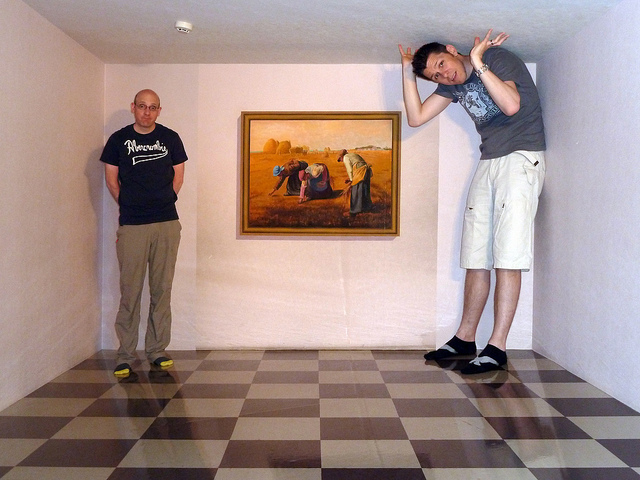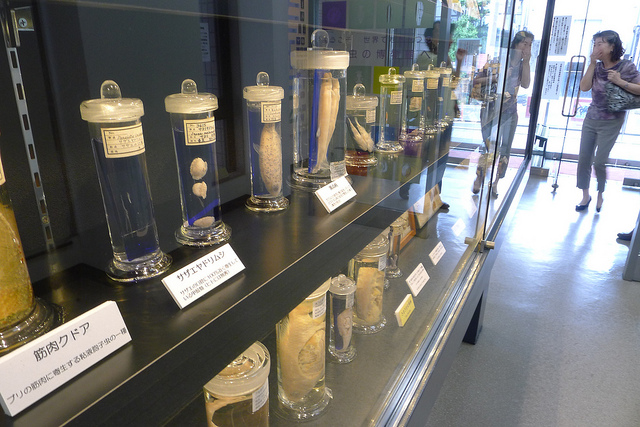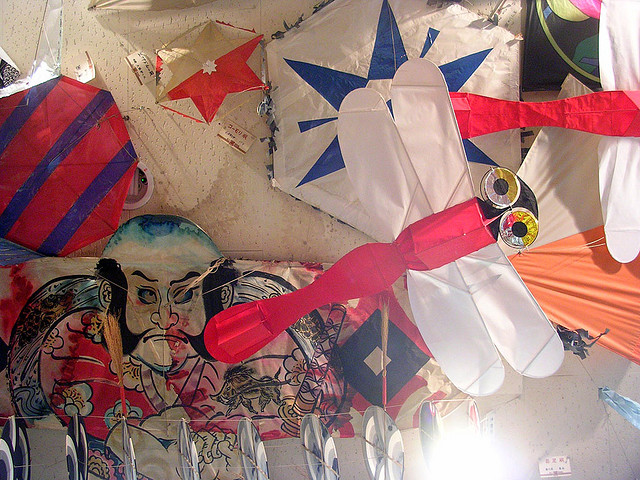The Japanese have come to be known for sharing both a fascinating cultural heritage that spans thousands of years as well as a modern love for technology, gadgets, anime and pop culture. For individuals embarking on a career teaching English abroad in Japan, this dichotomy often shows up in weekend outings and days off spent exploring all that this country of more than 6,800 islands has to offer.
Uncovering the Many Museums in Japan
While most tourists flock to Japan’s well-known museums of art, culture and history, those who find themselves taking up residence in towns like Osaka, Fukuoka, Niigata, and Matsue have the chance to discover the hidden gems that tourists tend to miss.
Travelers and new residents alike will find themselves visiting well-known spots like the stunning gardens outside the Adachi Museum of Art, taking in the stunning 360 degree birds-eye view of Japan from the top of the Mori Art Museum or even reveling in their love of anime at the Ghibli Museum in Tokyo. But after the tourists have hit all the famous sites listed in guidebooks and gone home, those who have come to Japan to teach English and immerse themselves in the culture often discover a Japan that few travelers ever have the chance to see.
Weird Museums in Japan
Amazing Photo Ops and Plenty of Laughs at Trick Art Museums

Trick Art Museum at the base of Mt. Takao (Photo Credit: Rob Young)
Did you know Japan is home to more than a dozen trick art museums? Fans of M.C. Escher and Julian Beever will revel in these quirky museums filled with artwork designed to mess with your perception and provide incredible photo ops. These are the museums that ensure you’ll have a Facebook cover photo that leaves your friends back home asking when they can come visit!
A day trip to hike Mt. Takao near Tokyo also gives you the perfect chance to stop by the Takao Trick Art Museum at the base of the mountain. For around $10(USD), you can spend an afternoon with friends stepping into artwork and posing for pictures in a wide range of rooms and images.
Similar trick art museums can be found around the country in cities like Nasu, Kyukaruizawa, Nikko and not just one but two in Tokyo.
Give Yourself Doubts about Digestion at the World’s Only Parasite Museum

Meguro Parasite Museum features more than 60,000 specimens (Photo Credit: Keatl)
No matter how much you might love teaching English in Japan, there will be days where you’ll feel drained and exhausted. Give yourself a little reminder of how much worse it could be by checking out the fairly creepy, but strangely fascinating collection at the Meguro Parasite Museum in Tokyo. Established in 1953 by Dr. Satoru Kamegai, this massive collective of more than 60,000 preserved parasites opens the door to an afternoon of squeamish fascination with your friends.
If you’ve ever found yourself wondering what to send to your friends back home as a unique gift from the land you’re growing to love, consider picking up a tapeworm t-shirt in the gift shop to ship home with everyone’s holiday gifts.
Reassure Yourself About Food at a Noodle Museum

Create your own cup noodle mix at the CupNoodle Museum in Yokahama. (Photo Credit: Ivan Lian)
If your stomach isn’t feeling too badly at this point, learn more about the beloved noodles you hear being slurped from bowls around the country at one of Japan’s two noodle related museums.
Bringing life to the history and creativity behind the simple Nissin Cup Noodles that have sustained many a college student through the years, the CupNoodles Museum in Yokohama enlightens visitors on the life and goals of Ramen inventor Momofuku Ando. While much of the museum is devoted to the creativity and goals of Ando, the museum does feature an interactive adventure allowing visitors to design and create their own custom Cup Noodles creation which is fully packaged, sealed and can be taken home and eaten.
While you’re in Yokohama, consider making it a themed trip and stop off at the Shin-Yohokama Ramen Museum. This nostalgic museum features nine different ramen shops designed to give you a taste of noodles from around the country.
That Woman in Your Building Isn’t the Only One Obsessed with Cats
If you can’t get enough cats in your daily Facebook news feed, stop by The Cat Museum in Ito City, Japan. The museum features more than 2,000 items ranging from big cats to domestic cats to toys and lucky doll cats. The ground floor of this museum features a wide range of displays including skeletons and stuffed wild and domestic cats, but those who venture upstairs to the live cat display will find a far more interactive experience.
Resembling a small zoo, visitors will find a wide range of cat breeds both caged and roaming free. Visitors are encouraged to interact and play with cats ranging from Russian Blues to Egyptian Maus to Siamese, Persian and Manx. A gift shop houses a wide range of items perfect for the cat lover in your group.
Explore the Fast Moving and Colorful History of Kites and Tops

Beautiful Collection in the Tokyo Kite Museum. (Photo Credit: Nelson Cunnington)
If you can’t get enough of spinning tops, or the trick work performed by yo-yo masters, you might want to venture off the beaten path to the Spinning Top Museum run by Yoshihito Fujita out of his home in Nagoya, Japan. The 70-year-old spinning top master is known as “Spinning Uncle” (koma no ochan) and has amassed a collection of 30,000 different tops. Fujita launched the Japan Spinning Top Promotion Association in 2002 and has worked to standardize the names and styles of tricks performed by spinning top masters.
Those looking for something to do while living in or traveling to Tokyo might want to check out the highly colorful displays at the Tokyo Kite Museum. Located in a small space above a restaurant, the museum opened in 1977 as the world’s first kite museum. Dedicated to helping children learn about and recognize traditional Japanese kite styles, this museum houses hundreds of kites including brilliantly hand painted dragons, butterflies and birds. Often overlooked by tourists, the museum costs less than $2US to visit and when paired with a trip to the park to fly your own kites can make a fabulous outing.
Enjoy the Unique Destinations of Japan
Even beyond the few museums mentioned here, it’s important to remember that Japan is simply full of unique and interesting areas to explore that don’t show up in every guidebook. From short-term exhibits at major museums that allow you to don a “poo” hat and take a ride down a toilet slide to the Suwa Lucandiae Museum’s massive display of beetles in Kichijoji, there’s always something new and interesting to explore.
Immersing yourself in the local culture opens the door for experiences that will be missed by the average tourist. Take advantage of the opportunity to learn the local language by engaging with your students and neighbors and asking around to find these hidden gems. You just might find yourself with a photo album people can’t wait to look at when you return home for a visit.
Learn more about starting your journey as an ESL teacher and teaching English abroad in Japan.












Leave a comment